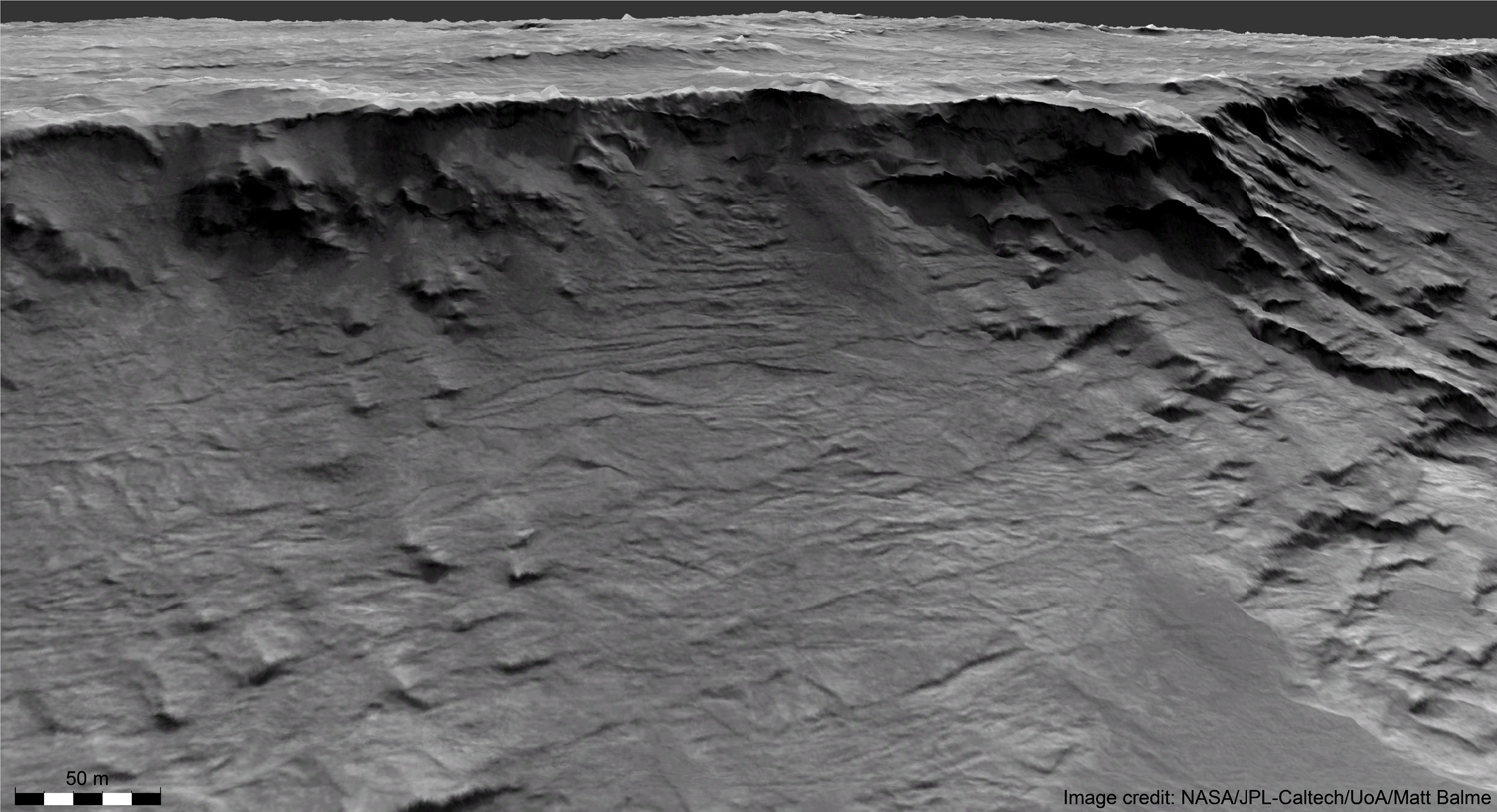Mars orbiter finds evidence of ancient, long-lived rivers on the Red Planet
Rivers could have been raging on ancient Mars for hundreds of thousands of years, a new study finds.
Scientists have long had evidence of water on Mars. Whether liquid water still exists there today is an open question, but we know that the planet was once covered with oceans, lakes and rivers. Now, for the first time, scientists have studied high-resolution images of what used to be a Martian river to determine exactly when and for how long the river was active.
Using the High Resolution Imaging Science Experiment (HiRISE) camera on NASA's Mars Reconnaissance Orbiter, a team of scientists led by Francesco Salese, a geologist at Utrecht University in the Netherlands, got an unprecedented closeup view of what was once an ancient river system in Hellas Planitia, an impact basin in Mars' southern hemisphere.
Related: 7 biggest mysteries of Mars
"OK, it is not like reading a newspaper, but the extremely high resolution imagery allowed us to 'read' the rocks as if you are standing very close to the cliff," Salese said in a statement from Utrecht University. "Unfortunately, we don't have the ability to climb, to look at the finer-scale details, but the striking similarities to sedimentary rocks on Earth leaves very little to the imagination."
Clues about the history of this ancient Martian river were buried in a 660-foot (200 meters) cliffside on the brim of Hellas Basin, where large fluvial channels indicate that water once flowed. By studying the sedimentary layers exposed in this cliff, the researchers determined that the river flowed 3.7 billion years ago, when life was just beginning to evolve on Earth.
Additionally, sandbanks created by shifting gullies, or water-worn ravines, suggest that this river influenced the landscape for a long period of time. Previous studies have found evidence of transient rivers that come and go with the seasons, but this river appears to have raged consistently all year round.
Breaking space news, the latest updates on rocket launches, skywatching events and more!
"The rivers that formed these rocks weren't just a one-off event — they were probably active for tens to hundreds of thousands of years," study co-author Joel Davis, a postdoctoral researcher at the Natural History Museum (NHM) in London, said in a NHM statement.
The researchers believe that sedimentary layers like these may be the ideal place to search not only for clues about water, but also for evidence of past life on Mars.
"Such perennially flowing rivers would require an environment capable of maintaining large volumes of water for extensive time periods, and almost certainly necessitated a precipitation-driven hydrological cycle," Salese said. "This kind of evidence, of a long-lived watery landscape, is crucial in our search for ancient life on the planet," he added.
The study was published May 5 in the journal Nature Communications.
- Photos: The search for water on Mars
- Mars had big rivers for billions of years
- This is an ancient meandering river ... on Mars
Email Hanneke Weitering at hweitering@space.com or follow her @hannekescience. Follow us on Twitter @Spacedotcom and on Facebook.
OFFER: Save 45% on 'All About Space' 'How it Works' and 'All About History'!
For a limited time, you can take out a digital subscription to any of our best-selling science magazines for just $2.38 per month, or 45% off the standard price for the first three months.

Hanneke Weitering is a multimedia journalist in the Pacific Northwest reporting on the future of aviation at FutureFlight.aero and Aviation International News and was previously the Editor for Spaceflight and Astronomy news here at Space.com. As an editor with over 10 years of experience in science journalism she has previously written for Scholastic Classroom Magazines, MedPage Today and The Joint Institute for Computational Sciences at Oak Ridge National Laboratory. After studying physics at the University of Tennessee in her hometown of Knoxville, she earned her graduate degree in Science, Health and Environmental Reporting (SHERP) from New York University. Hanneke joined the Space.com team in 2016 as a staff writer and producer, covering topics including spaceflight and astronomy. She currently lives in Seattle, home of the Space Needle, with her cat and two snakes. In her spare time, Hanneke enjoys exploring the Rocky Mountains, basking in nature and looking for dark skies to gaze at the cosmos.



